Olive Oil vs Peanut Oil: Which One is Better?
Olive oil is a popular oil that is made from pressing olives. It is known for its heart-healthy monounsaturated fats, which can help lower cholesterol levels and reduce the risk of heart disease. On the other hand, peanut oil is made from pressing peanuts and is known for its high smoke point, making it a great option for high-heat cooking methods such as frying.
In this article, we will explore the differences between these two oils and help you make an informed decision on which one to use for your cooking needs. Whether you are looking for a healthier option or an oil that can withstand high temperatures, we will provide you with all the information you need to make the best choice for your cooking.
Brief Overview of the Oils
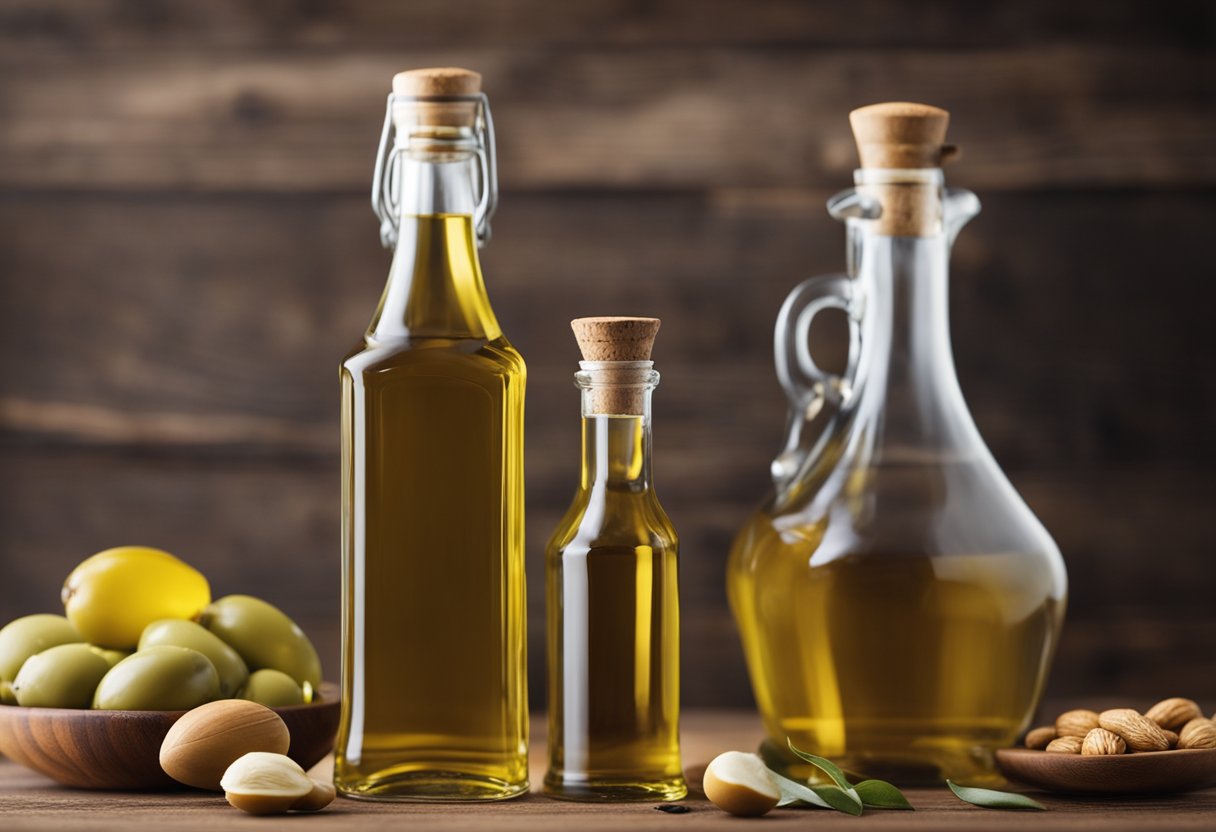
When it comes to choosing the right oil for cooking, olive oil and peanut oil are two popular options. Both oils have their own unique characteristics that make them suitable for different types of cooking. Here’s a brief overview of the two oils:
Olive Oil
Olive oil is made by pressing whole olives. It is a staple in Mediterranean cuisine and is known for its health benefits. Olive oil is rich in monounsaturated fats, which can help lower bad cholesterol levels. It is also high in antioxidants and anti-inflammatory compounds that can help protect against chronic diseases.
There are different types of olive oil, including extra-virgin, virgin, and regular olive oil. Extra-virgin olive oil is considered the highest quality and is made from the first cold pressing of the olives. It has a fruity flavor and is best used in salads, dips, and dressings. Virgin olive oil is made from the second pressing and has a milder taste. Regular olive oil is a blend of cold-pressed and processed oils and has a neutral flavor. It is best used for cooking at high temperatures.
Peanut Oil
Peanut oil is made from pressed peanuts and is commonly used in Asian cuisine. It has a high smoke point, which makes it ideal for deep-frying. Peanut oil is also rich in monounsaturated and polyunsaturated fats, which can help lower bad cholesterol levels and reduce the risk of heart disease.
There are two types of peanut oil: refined and unrefined. Refined peanut oil has a neutral flavor and is best used for high-heat cooking. Unrefined peanut oil has a stronger peanut flavor and is best used for dressings and dips.
Which One Is Better
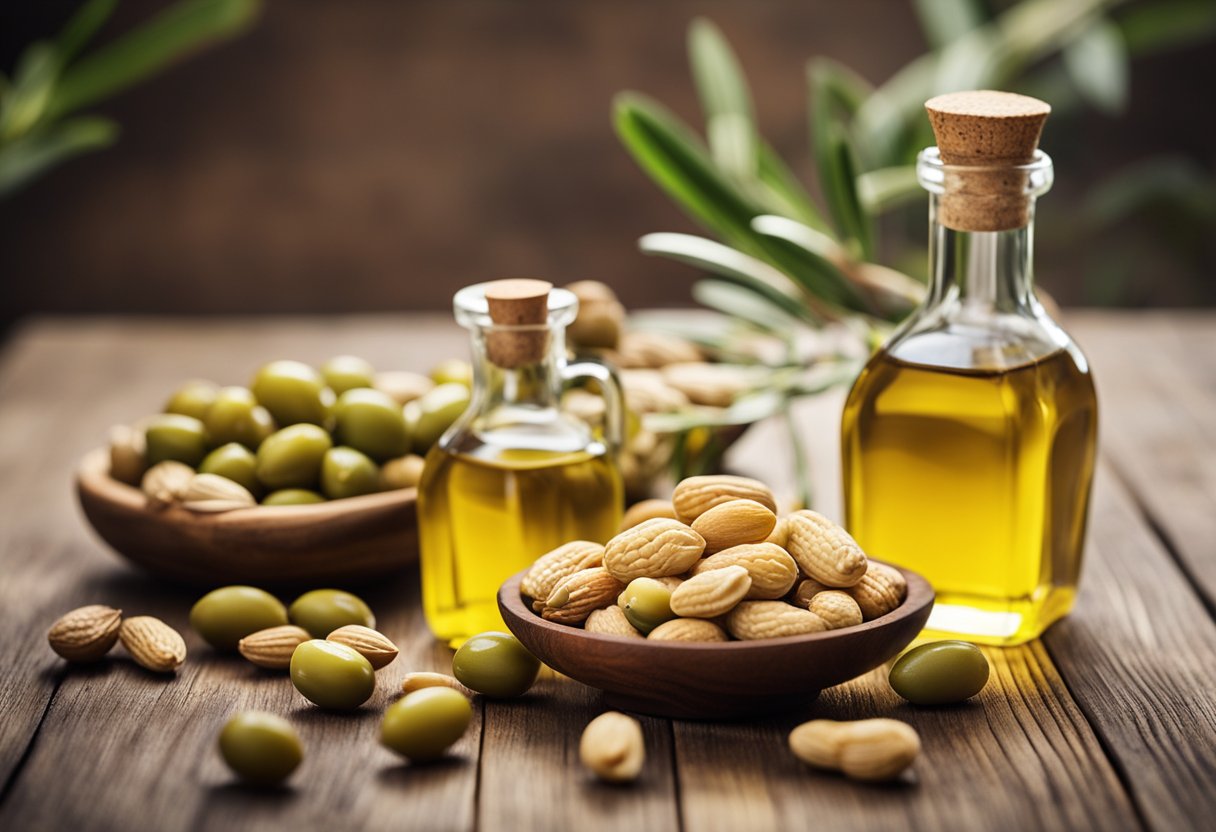
When it comes to choosing between olive oil and peanut oil, it ultimately depends on your personal preferences and dietary needs. Both oils have their own unique benefits and drawbacks.
If you are looking for an oil that is high in monounsaturated fats, then olive oil may be the better choice for you. Monounsaturated fats can help lower bad cholesterol levels and reduce the risk of heart disease. Olive oil also contains antioxidants that can help protect your body from damage caused by free radicals.
On the other hand, if you are looking for an oil with a high smoke point, then peanut oil may be the better choice. Peanut oil has a smoke point of around 450°F, which makes it ideal for high-heat cooking methods like frying and sautéing. Olive oil has a lower smoke point, which means it may not be suitable for these types of cooking methods.
It’s important to note that peanut oil contains higher levels of omega-6 fatty acids than olive oil. While omega-6 fatty acids are essential for good health, consuming too much of them can lead to inflammation in the body. On the other hand, olive oil contains higher levels of omega-9 fatty acids, which have been shown to have anti-inflammatory effects.
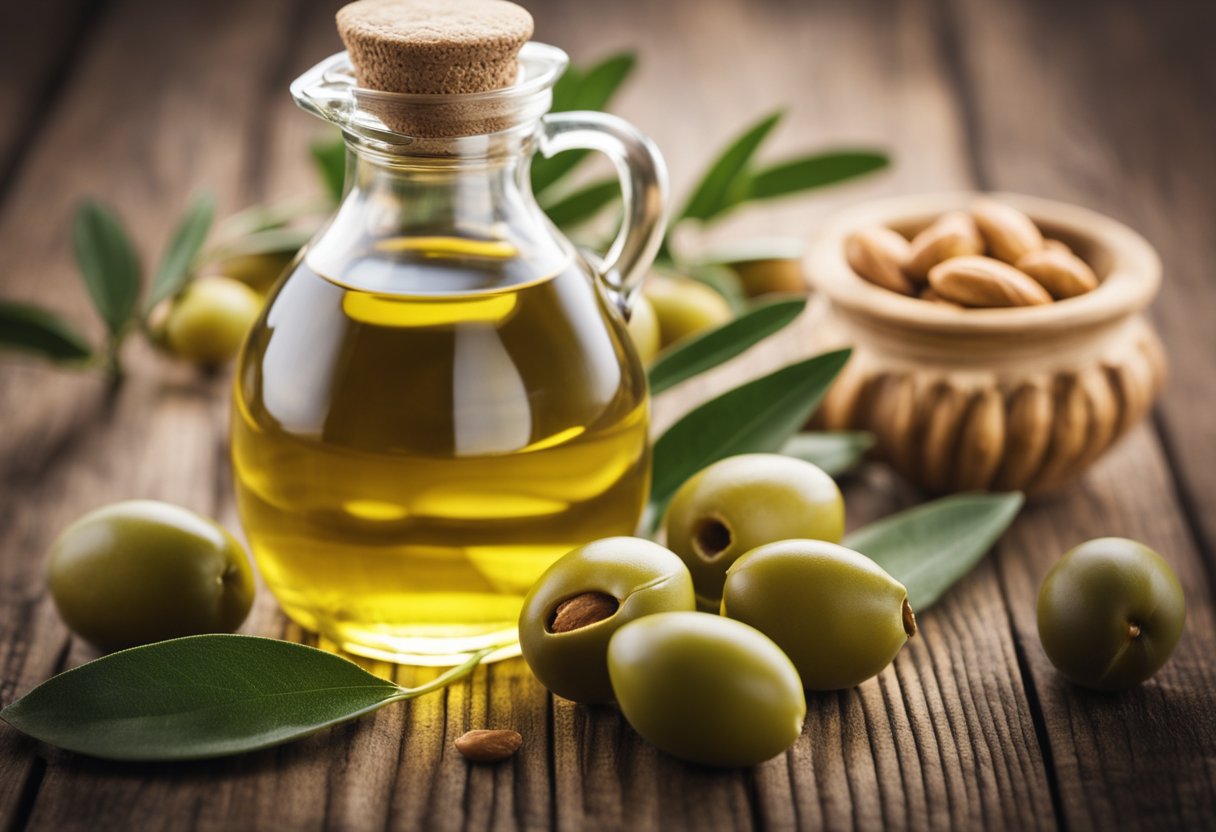
Difference in Smoke Point
When it comes to choosing between olive oil and peanut oil, one important factor to consider is the smoke point. The smoke point is the temperature at which the oil begins to smoke and break down, producing harmful compounds that can affect the flavor and nutritional value of your food.
Peanut oil has a higher smoke point than olive oil, making it a better choice for high-heat cooking methods such as frying and stir-frying. According to Brightland.co, refined peanut oil has a smoke point of about 450 degrees Fahrenheit, while extra-virgin olive oil has a smoke point of about 410 degrees Fahrenheit at its freshest.
However, it’s important to note that most home cooking situations rarely require a frying temperature above 400 degrees Fahrenheit. So either oil will be suitable for that. If you’re looking for an oil with a higher smoke point than extra-virgin olive oil, you could consider using light olive oil, which has a smoke point of around 465 degrees Fahrenheit, as mentioned by Cleveland Clinic.
It’s also worth noting that the smoke point of oils can vary depending on their quality and how they are processed. For example, unrefined oils tend to have lower smoke points than refined oils. As mentioned by The Spruce Eats, unrefined peanut oil has a smoke point of around 320 degrees Fahrenheit, while refined peanut oil has a higher smoke point of around 450 degrees Fahrenheit.
Difference in Flavor
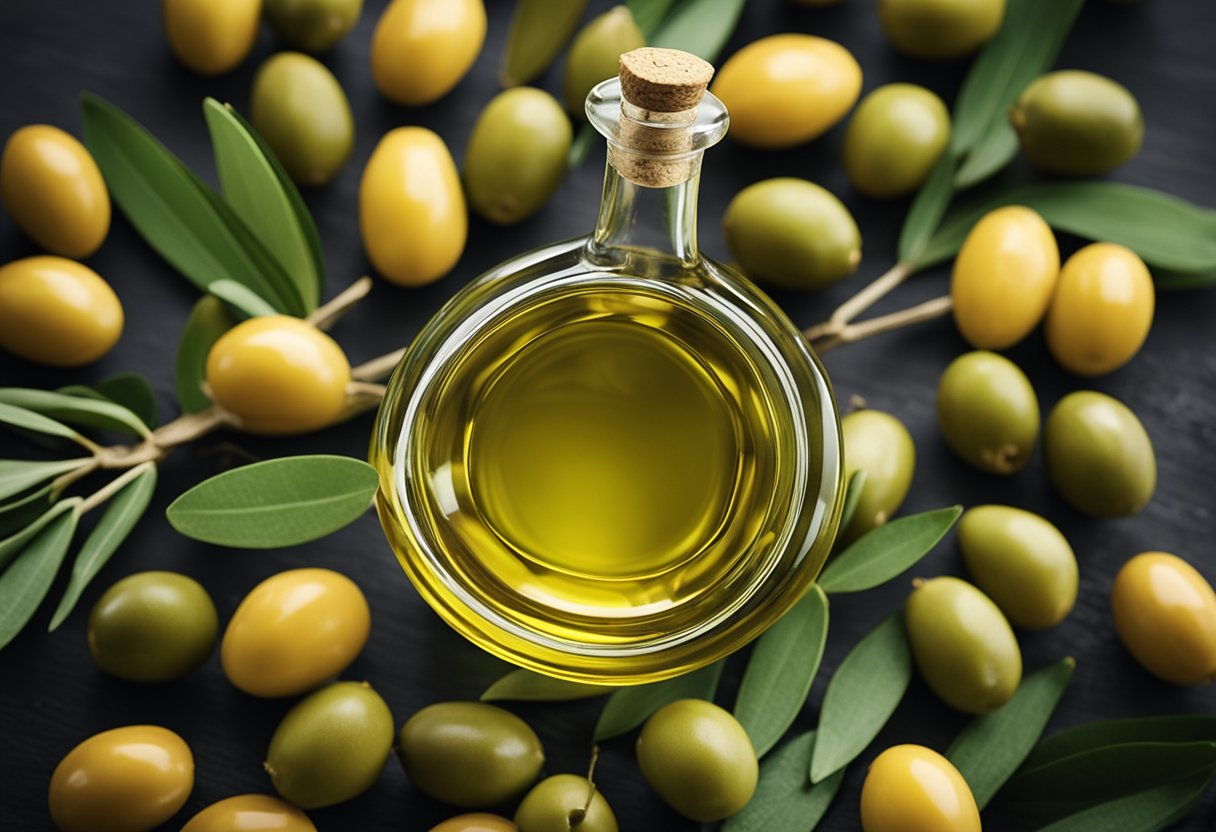
When it comes to flavor, peanut oil and olive oil have distinct differences. Peanut oil has a nutty flavor that is stronger than olive oil. On the other hand, olive oil has a mild, fruity flavor that is often described as buttery.
If you’re looking for a cooking oil that will add a distinct flavor to your dishes, peanut oil is a great choice. It works well in Asian and African cuisine, particularly in dishes that are stir-fried or deep-fried. The nutty flavor of peanut oil also complements the taste of roasted vegetables and grilled meats.
Olive oil, on the other hand, has a more subtle flavor that works well in a variety of dishes. It’s great for sautéing vegetables, making salad dressings, and drizzling over pasta or bread. Extra virgin olive oil has a stronger flavor than regular olive oil, and it’s best used as a finishing oil to add flavor to dishes.
Difference in Nutritional Composition
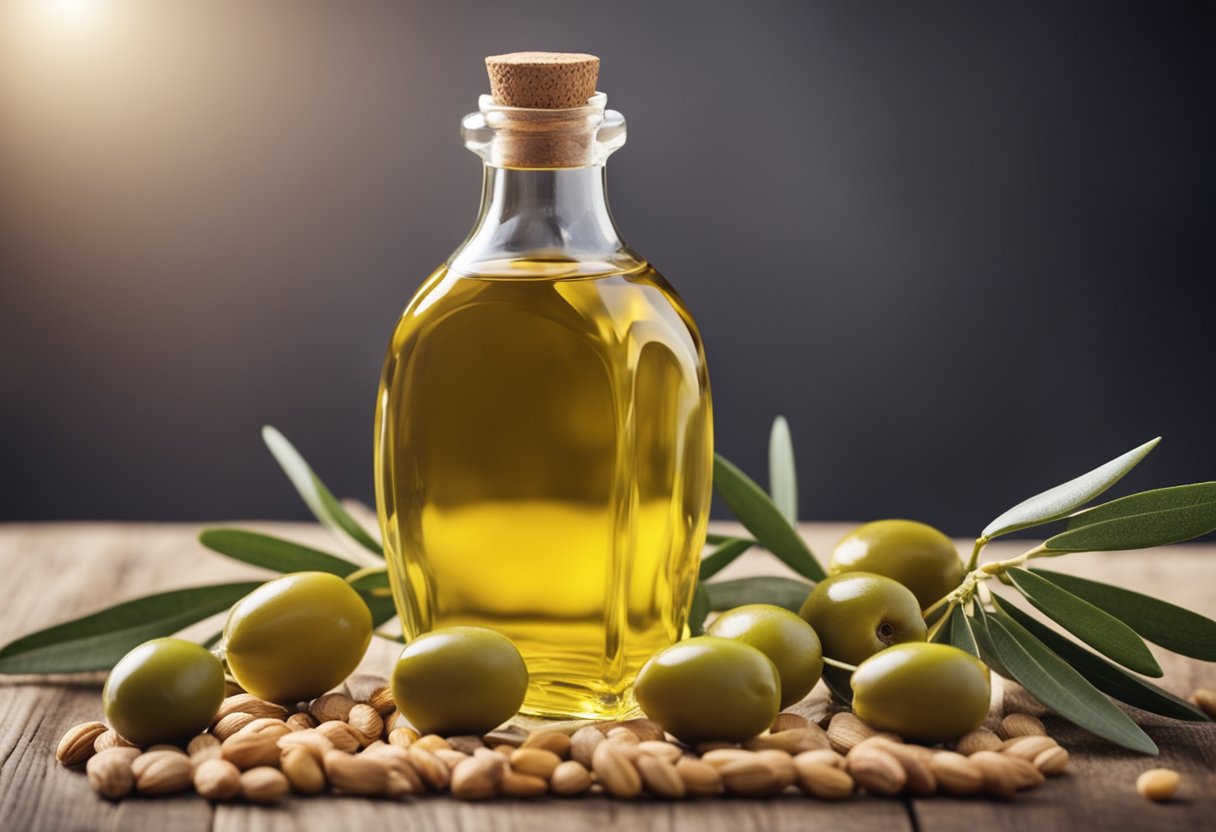
When it comes to comparing the nutritional composition of olive oil and peanut oil, there are some notable differences to consider. Here’s a breakdown of some of the key differences:
Fats
Both olive oil and peanut oil are high in fat, but they differ in the types of fats they contain. Peanut oil is higher in saturated fat, which has been linked to an increased risk of heart disease. On the other hand, olive oil is higher in monounsaturated and polyunsaturated fats, which are considered to be healthier fats that can help reduce the risk of heart disease.
Vitamins and Minerals
Olive oil and peanut oil also differ in their vitamin and mineral content. While peanut oil is higher in vitamin E, olive oil contains more iron, copper, fiber, and calcium. Vitamin E is an important antioxidant that helps protect cells from damage, while iron is important for healthy blood function, copper is important for healthy bones and connective tissues, fiber is important for digestive health, and calcium is important for healthy bones and teeth.
Calories
Both olive oil and peanut oil are high in calories, but olive oil is slightly lower in calories than peanut oil. One tablespoon of olive oil contains about 120 calories, while one tablespoon of peanut oil contains about 130 calories.
Difference in Health Benefits and Risks
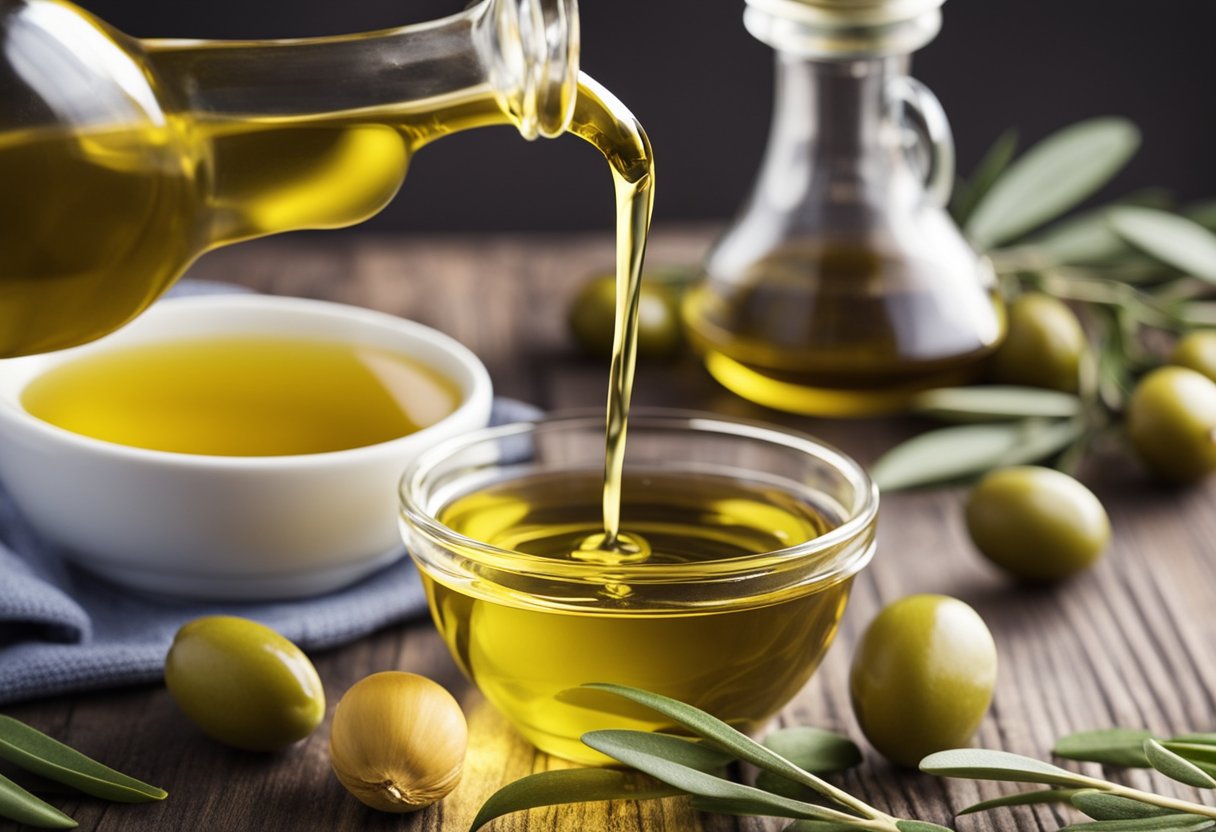
When it comes to health benefits and risks, there are some key differences between olive oil and peanut oil. Here are some things to keep in mind:
Health Benefits of Olive Oil
Olive oil is well-known for its potential health benefits, which include:
- Heart health: Olive oil is high in monounsaturated fatty acids, which are believed to help reduce the risk of heart disease. It also contains antioxidants that may help protect against heart disease.
Anti-inflammatory properties: The polyphenols in olive oil have anti-inflammatory properties, which may help reduce the risk of chronic diseases like cancer and Alzheimer’s disease.
Weight management: Some studies suggest that consuming olive oil may help with weight management, as it can help you feel full and satisfied.
Health Benefits of Peanut Oil
Peanut oil also has some potential health benefits, including:
Heart health: Like olive oil, peanut oil is high in monounsaturated fatty acids, which can help reduce the risk of heart disease.
Vitamin E: Peanut oil is a good source of vitamin E, which is an important antioxidant that can help protect against chronic diseases.
Cancer prevention: Some studies suggest that the resveratrol in peanut oil may have anti-cancer properties.
Health Risks of Olive Oil
While olive oil is generally considered a healthy choice, there are some potential risks to keep in mind:
Calorie content: Olive oil is high in calories, so it’s important to use it in moderation if you’re watching your calorie intake.
Quality concerns: Not all olive oil is created equal. Some brands may be diluted with other oils or may not be pure olive oil at all. Look for high-quality, extra-virgin olive oil to ensure that you’re getting the most health benefits.
Health Risks of Peanut Oil
Peanut oil also has some potential risks, including:
Allergies: Peanut oil can cause severe allergic reactions in people with peanut allergies. If you or someone in your household has a peanut allergy, it’s important to avoid peanut oil altogether.
Omega-6 fatty acids: Peanut oil is high in omega-6 fatty acids, which can be pro-inflammatory in large amounts. While omega-6 fatty acids are important for overall health, it’s important to balance them with omega-3 fatty acids to avoid inflammation.
Difference in Price
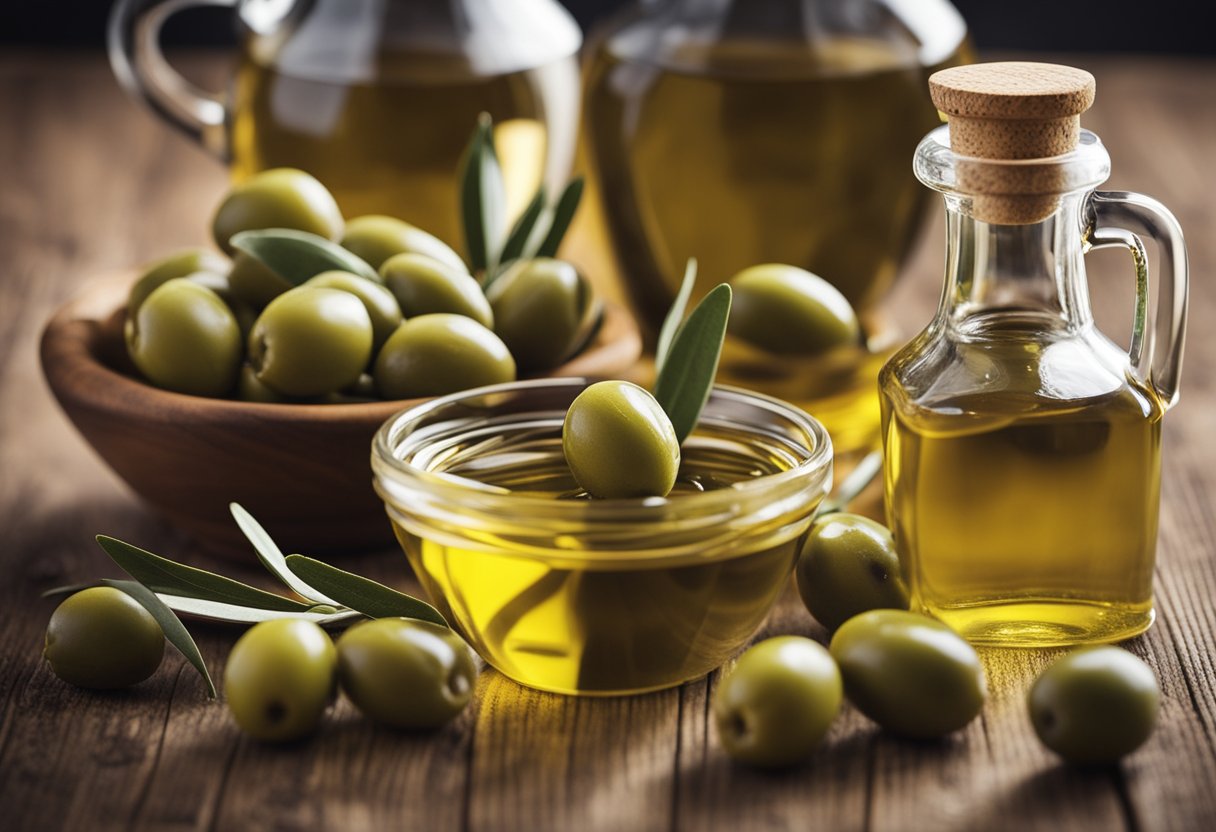
Generally speaking, peanut oil is less expensive than olive oil. This is due to a few reasons.
Firstly, peanuts are much cheaper to grow and harvest than olives. Peanuts are grown in many parts of the world, including the United States, China, and India, making them widely available and affordable. On the other hand, olives are primarily grown in Mediterranean countries such as Italy, Spain, and Greece, which can make them more expensive to import.
Secondly, the production process for peanut oil is simpler and requires less equipment than olive oil. This means that the cost of producing peanut oil is lower, which translates to a lower price for consumers.
However, it’s important to note that the price of both oils can vary depending on factors such as the brand, quality, and quantity. Additionally, some specialty or high-end peanut oils may be more expensive than basic olive oils.
Difference in Availability
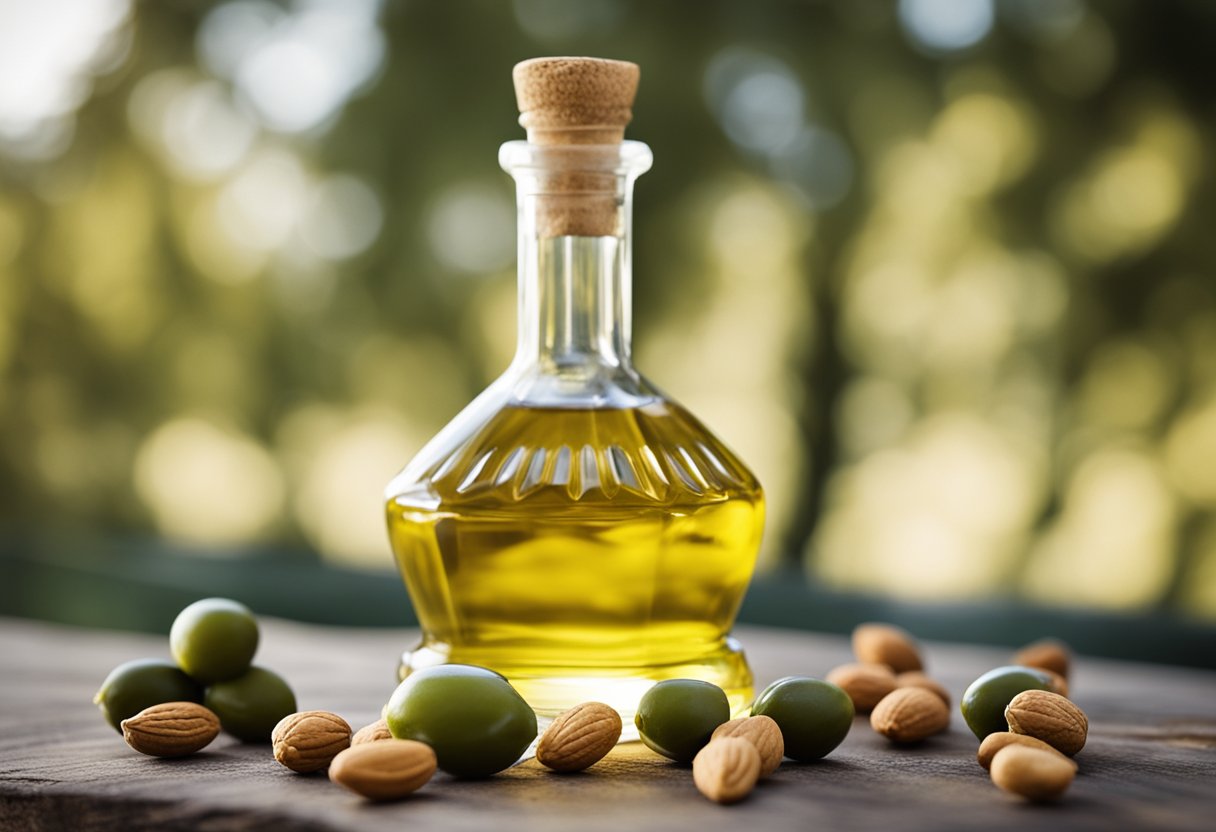
When it comes to availability, olive oil is more widely available than peanut oil. You can find olive oil in almost every grocery store, health food store, and online markets. On the other hand, peanut oil is not as widely available as olive oil. You may have to visit specialty stores or online markets to find peanut oil.
Olive oil is produced in many countries, including Spain, Italy, Greece, and the United States. This means that you can find different types of olive oil, such as extra-virgin, virgin, and refined, from different regions. Peanut oil, on the other hand, is mainly produced in the United States, Argentina, and China. This may limit the variety of peanut oil that you can find in stores.
If you have a peanut allergy, it’s important to note that peanut oil may be used in some processed foods, such as baked goods and snacks. Therefore, it’s essential to read food labels carefully. If you’re unsure about the ingredients, you can always contact the manufacturer to confirm whether or not the product contains peanut oil.
Can You Substitute Them in Recipes
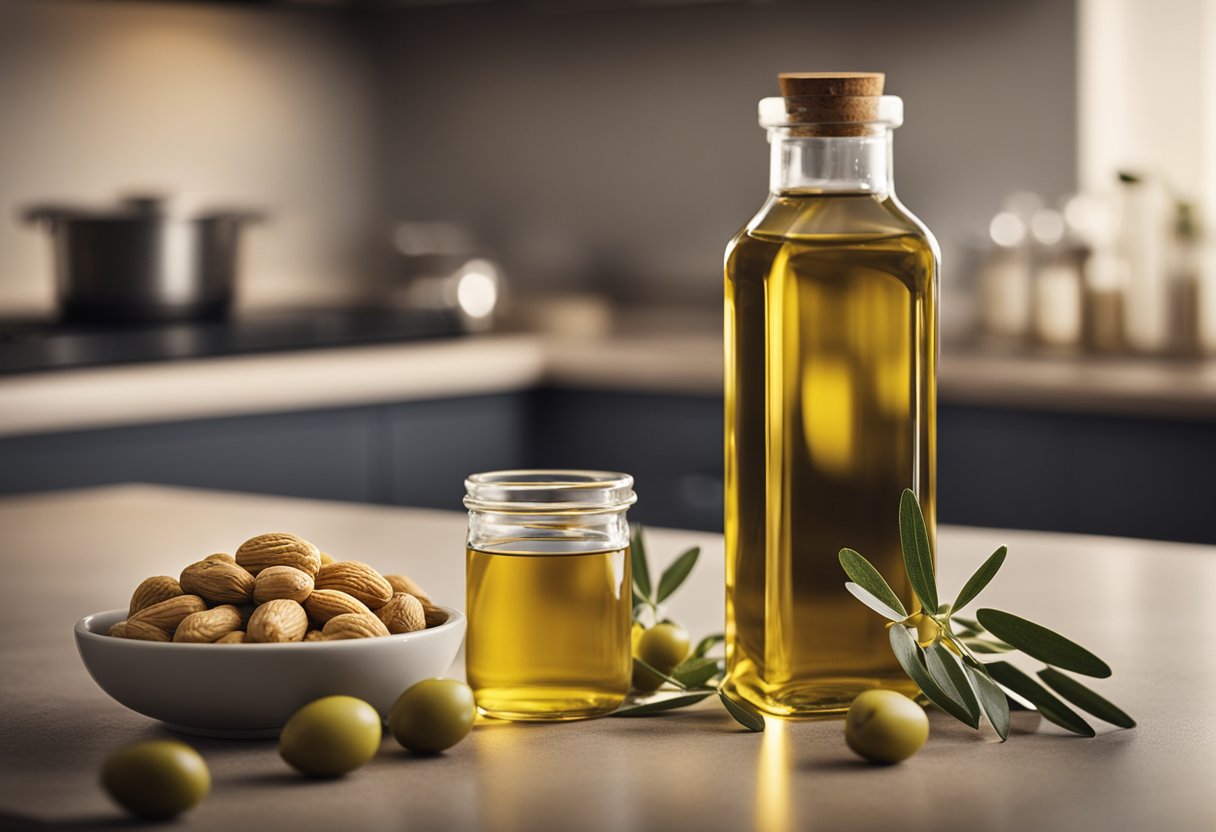
If you’re wondering whether you can substitute olive oil for peanut oil or vice versa, the answer is yes, you can. However, there are some things to keep in mind.
Flavor
Peanut oil has a nutty flavor that can be overpowering in some recipes, while olive oil has a more subtle flavor. If you’re using peanut oil in a recipe that calls for olive oil, keep in mind that it will impart a deeper, nuttier flavor. On the other hand, if you’re using olive oil in a recipe that calls for peanut oil, you may need to add some additional flavorings to compensate for the milder taste.
Smoke Point
Another thing to consider is the smoke point of the oil. Peanut oil has a higher smoke point than olive oil, which means it can be heated to higher temperatures before it starts to smoke and burn. If you’re using olive oil in a recipe that requires high heat, such as frying, you may need to use a different oil with a higher smoke point to avoid burning the oil and your food.
Texture
The texture of the oil can also affect the final outcome of your recipe. Peanut oil has a light texture that works well in baking, while olive oil has a heavier texture that can be better suited for sautéing or roasting. Keep this in mind when substituting one oil for the other in your recipes.
Can You Mix Them

When it comes to cooking oils, you may wonder whether you can mix olive oil and peanut oil. The answer is yes, you can mix them. In fact, mixing oils can help you achieve a better flavor and texture in your dishes.
However, keep in mind that peanut oil has a distinct flavor that can overpower the taste of other oils. Therefore, it’s best to use a small amount of peanut oil when mixing with other oils.
If you’re mixing olive oil and peanut oil for frying, it’s important to note that olive oil has a lower smoke point than peanut oil. This means that olive oil will start to smoke at a lower temperature than peanut oil, which can affect the taste and quality of your food.
To avoid this, you can mix equal parts of olive oil and peanut oil to increase the smoke point of the mixture. Alternatively, you can use refined olive oil, which has a higher smoke point than extra-virgin olive oil.
Difference in Storage
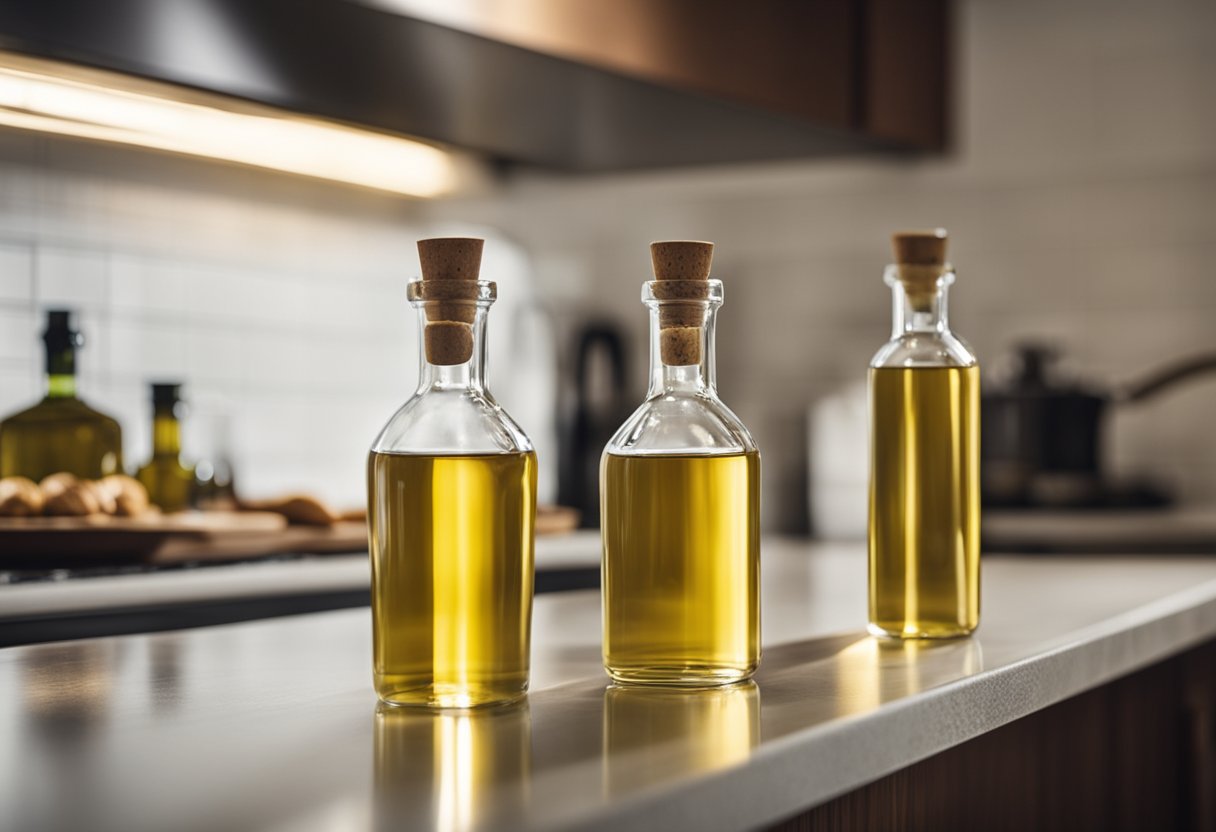
When it comes to storage, both olive oil and peanut oil have similar requirements. Here’s what you need to know:
- Store oil in a cool, dry place, away from sunlight and heat sources.
- Use a dark-colored bottle to protect it from light.
- Keep the bottle tightly sealed to prevent air from getting in.
- Use it within one year of opening the bottle.
How to Tell If the Oil Has Gone Bad
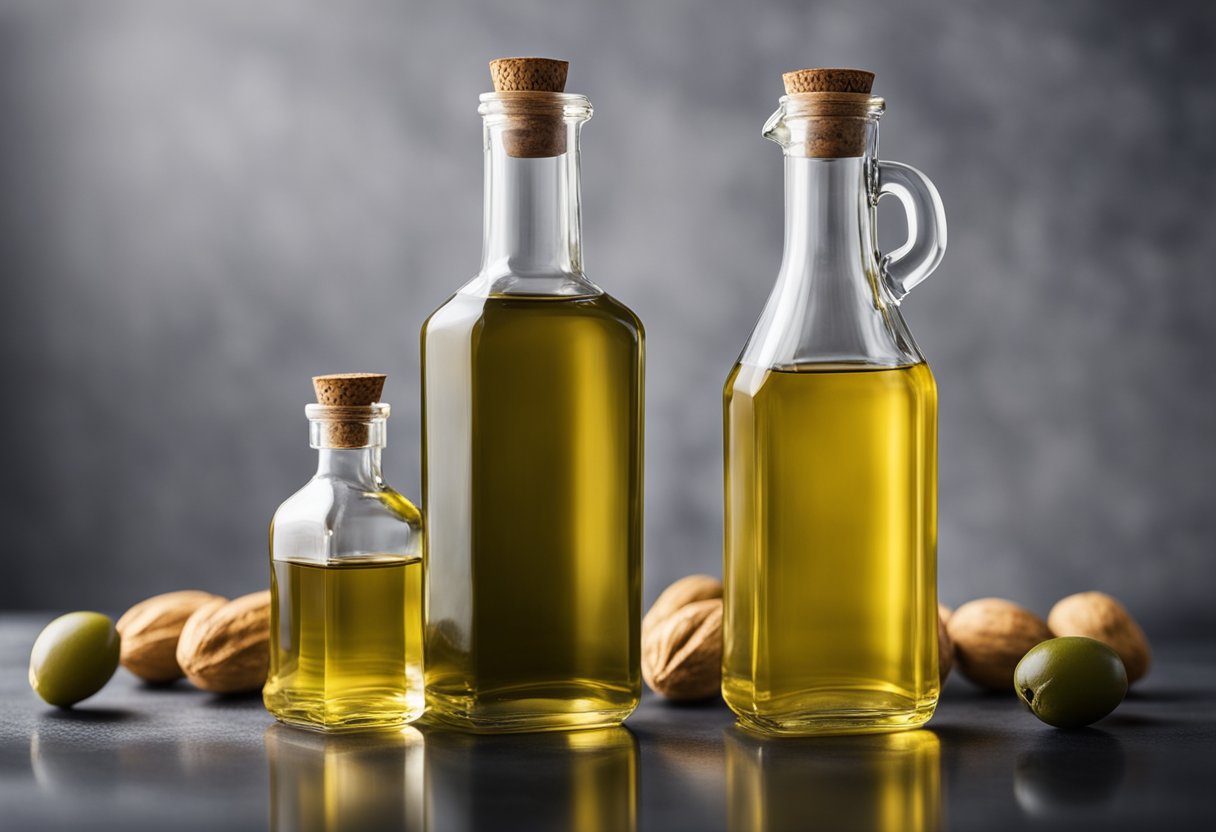
Both olive oil and peanut oil can go bad over time. To ensure that you are using fresh and safe oil, it is important to know how to tell if the oil has gone bad. Here are some signs to look out for:
Smell
One of the easiest ways to tell if your oil has gone bad is by smelling it. Rancid oil has an unpleasant smell that is often described as musty, stale, or even like crayons. If your oil smells off, it is time to throw it out.
Taste
Bad oil will have a rancid taste that is not enjoyable. If you notice that your oil tastes stale or bitter, it is time to get rid of it.
Appearance
Another way to tell if your oil has gone bad is by its appearance. If it has become cloudy or has developed sediment at the bottom of the bottle, it is likely that the oil has gone bad.
Time
Both olive oil and peanut oil have a shelf life of about 1-2 years. If you have had your oil for longer than this, it is likely that it has gone bad and should be thrown away.
Storage
Proper storage can also help to extend the shelf life of your oil. Keep your oil in a cool, dark place away from direct sunlight and heat sources. Make sure the container is tightly sealed to prevent air and moisture from getting in.
By keeping an eye (and nose) out for these signs, you can ensure that you are using fresh and safe oil in your cooking.
A Summary Table
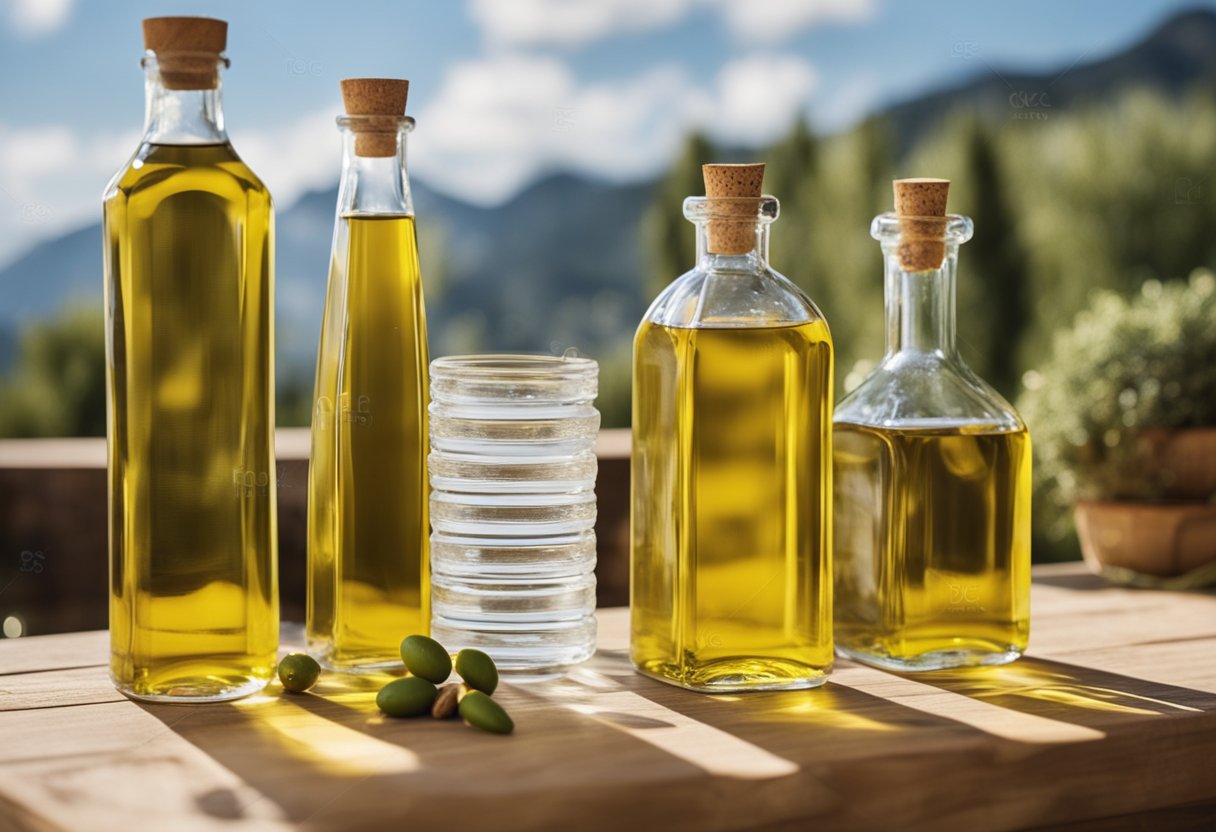
To help you compare olive oil and peanut oil, here’s a table that summarizes the differences between the two:
| Criteria | Olive Oil | Peanut Oil |
|---|---|---|
| Usage | Best for dressings, dips, and low-heat cooking | Best for high-heat cooking and deep-frying |
| Smoke Point | Lower smoke point (325-375°F) | Higher smoke point (450°F) |
| Flavor | Fruity, nutty, and sometimes bitter | Mild, nutty, and slightly sweet |
| Nutritional Composition | High in monounsaturated fats, antioxidants, and vitamin E | High in polyunsaturated and monounsaturated fats, and vitamin E |
| Health Benefits | May reduce inflammation, lower risk of heart disease, and improve brain function | May help lower cholesterol levels, reduce inflammation, and improve heart health |
| Risks | May cause allergic reactions in some people | May contain aflatoxins, which are harmful substances produced by fungi |
| Price | Relatively expensive | Relatively inexpensive |
| Availability | Widely available | Widely available |
Other Comparable Oils
While olive oil and peanut oil are two of the most popular oils for cooking, there are other oils that you can consider using as well. Here are a few other comparable oils:
Canola oil: This oil is low in saturated fat and high in monounsaturated fat, making it a healthy option for cooking. It has a neutral flavor, making it versatile for different types of dishes.
Coconut oil: This oil has gained popularity in recent years for its potential health benefits. It is high in saturated fat, but some studies suggest that it can help improve cholesterol levels. Coconut oil has a distinct flavor and is best used in dishes where the flavor will complement the coconut taste.
Avocado oil: This oil is high in monounsaturated fat and has a high smoke point, making it a good option for high-heat cooking. It has a mild, buttery flavor that works well in salad dressings and marinades.
- Sesame oil: This oil has a distinct nutty flavor and is commonly used in Asian cooking. It is high in polyunsaturated fat and has a low smoke point, so it is best used in dishes that don’t require high heat.
When choosing an oil for cooking, consider the smoke point, flavor, and nutritional content. Each oil has its own unique characteristics, so choose the one that best suits your needs and preferences.
